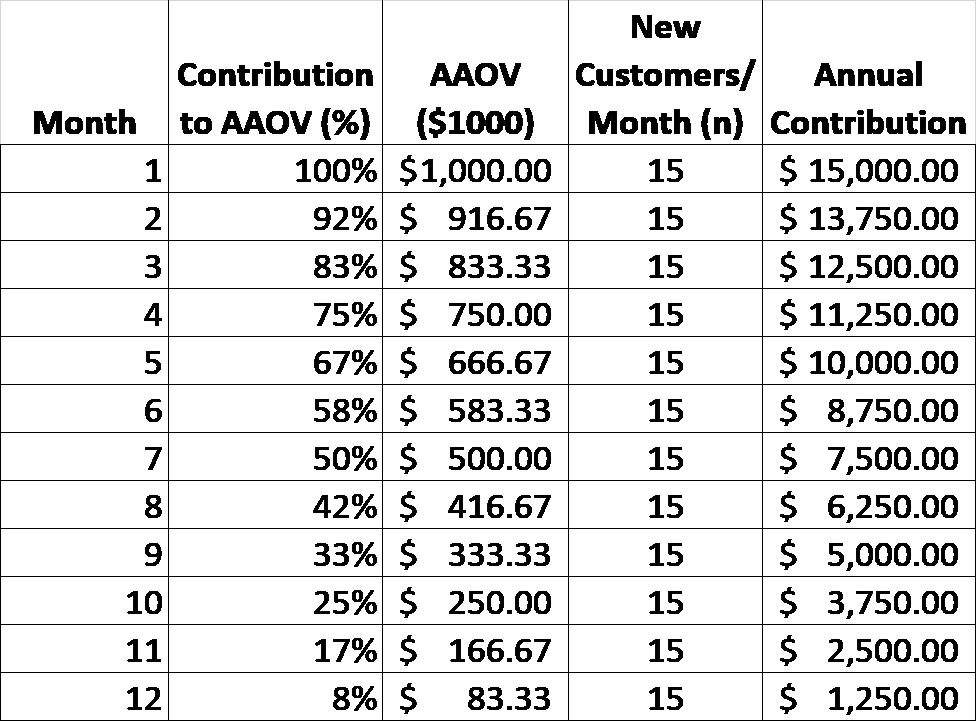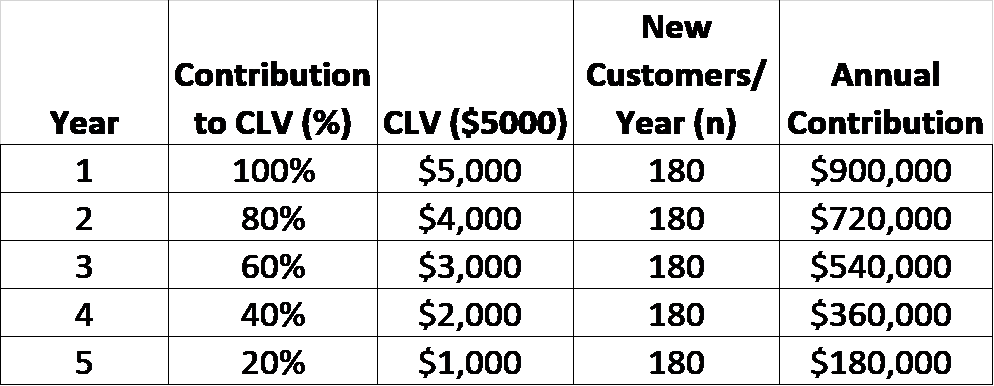MARKETING INITIATIVES WITHOUT COST
A colleague told me that his head of marketing believed that marketing should not cost anything to their company. My first response was to claim this is impossible. However, I continued to expand on this thought experiment in order to fully understand this concept.
If you came here from a post on this topic elsewhere then you probably want to download the calculator and start plugging in your numbers.
The hypothesis is that there are marketing initiatives that have no net cost. It is important that we understand a few terms and agree upon their monetary value before we can reach our conclusion.
What is the cost of customer acquisition (CAC)? It is typical for most industries to spend $200 to $300 for a new customer. This range applies to many life sciences companies from my own research and experience. Many variables will affect the value. The variables are the sales costs plus the marketing costs (which includes the marketing campaigns) divided by the number of customers acquired. For example, if your company spent $200,000 on sales and marketing efforts and acquired 1,000 new customers then your company’s CAC is $200. Let’s assume a conservative CAC of $200 for this thought experiment.

What is the value of the first purchase? To understand the value of the first purchase we look at the average order value (AOV) for your company. It could be a fair generalization to assume an AOV of $300. Some buffers cost less and most kits cost more.
The customer cycle is different in different industries. For life sciences, it is an average of 5 years, based on the fact that some researchers will only use your products for a single project, during their tenure at graduate school, or spanning an entire career. To simplify the value of a single customer we will look at the annual order value (AAOV) and the lifetime value (CLV).
Depending on the product you are selling and the application being used we will generalize that an average customer makes several purchases during the year which establishes the AAOV at $1000; and subsequently the CLV at $5,000.
Now that we have established terms and their values we can ask the important question. How much we are willing to pay for the acquisition of 15 customers in a month? Let’s use the variable “n” to represent a customer.
15 NEW CUSTOMERS EVERY MONTH

Using our defined value of $200 for CAC:
15n = $3,000
Several business experts state that an ideal CLV:CAC ratio should be 3:1. The value of a customer should be three times more than the cost of acquiring them. If the ratio is close i.e.1:1, you are spending too much. If it’s 5:1, you are spending too little. In fact, you are probably missing out on business.
Replace CLV with AAOV to Determine Health of the Marketing Initiative
Instead of using CLV we will use AAOV because we want to recover the cost of acquiring customers within the first 12 months, ideally.
In that case AAOV is $1000; therefore 15n = $15,000.
This is only taking into account the AAOV from new customers in a single month. Based on this our CLV:CAC is 5:1 which means there should be room to spend more on marketing.
There are values for churn or retention that we would need to add for this equation to be precise, but even with normal churn rates, this is a healthy ratio to approximate.
You can see that in this scenario a company could have a cost-free marketing campaign. But how do we acquire these customers at this great value?
Getting Ranked on the First Page of Google

Not a Google Ads, PPC Model
The answer to acquiring these new customers is being on the first page of a Google search result page. I’m not referring to ads, using a pay-per-click (PPC) model that only has less than 15% click-through rates (CTR) along with abysmally high bounce rates of around 50%. Life sciences companies can easily spend hundreds of dollars each month per keyword using this model.
This is SEO on Steroids

This is about boosting your search engine optimization (SEO), but not the long, drawn-out, tedious process that this typically requires. This is about using the proprietary PASEO Software™.
Check Out These Numbers

These calculations are based on the 30 Keyword Plan (KP).
Based on doing research on your target customer we can expect an average click volume (CV) of 50 prospects per keyword. 50 clicks on 30 keywords equal 1,500 prospects visiting your website each month.
Let’s use a conservative conversion rate (CR) of 1%. This means 1500 prospects would equal 15 new customers each month.
So, restating that prior paragraph as an equation we get:
KP x CV x CR = n or 30 x 50 x 0.01 = 15
Let’s restate some previous assumptions on how PASEO Software™ can provide a cost-free marketing initiative. Our assumption states that AOV is $300, therefore 15 new customers bring in $4500 additional monthly revenue.
Monthly Revenue Increase (MRI)
AOV x n = $300 x 15 = $4,500
Annual Revenue Increase (ARI)
This requires calculating the decreasing annual revenue that comes from new customers that makes purchases at the beginning of the fiscal year compared to the purchases from new customers at the end of the fiscal year. To value this 12 month cycle we will use a table to sum the monthly calculations.

ARI = $97,500
By constraining the timeframe to 12 months reduces the mean AAOV for the year to $541.67 per customer.
Lifetime Revenue Increase (LRI)
Restating our assumption that the average lifecycle for a customer is 5 years is the basis for this calculation. We will use a timeframe of 5 years. This means that the first year will include the entire calculation for CLV and each subsequent year will decrease in total contribution. The other assumption that is used in this calculation is the number of new customers per year is equal to 15 per month for 12 months or 180.

LRI = $2,700,000
By constraining the timeframe to 5 years reduces the CLV for the lifetime to $3,000 per customer. The underlying assumption is that the longer we have engagement from a customer the more valuable they become to the company.
PROFITABILITY
The most important value to calculate in your marketing initiative is profitability. It has been said that if you spend a $1 on marketing and that provides your business with $2 in new revenue then your business will always be profitable.
The cost that needs to be factored at this point is KP. If the average price for a keyword monthly subscription is $100 then the 30 KP is $3,000 and brings us to our original assumption that CAC is $200.
Monthly Profit (MP)
MP = MRI – 30 KP = $1,500
Annual Profit (AP)
AP = ARI – (30 KP x 12) = $61,500
Lifetime Profit (LP)
LP = LRI – (30 KP x 60) = $2,520,000
Even though these types of results take months to approach these numbers, the trajectory towards profitability can be seen almost immediately. At around 4 to 6 months the revenue should begin to demonstrate profitability and then this is really when marketing initiative starts becoming cost-free. Even if we discount the gross revenue increase of this initiative by 50% to account for the costs required to make the products, it is clearly apparent that this is not only cost-free, but still highly profitable. Download the ROI calculator and plug-in the variables for your company to see what you need to do to achieve this level of profitability.
Please use the comment section below to share your thoughts regarding the accuracy of the calculations. All valid insights will be incorporated into future versions of the calculations. If the calculations presented make sense then I will be hearing from you.
Our goal at Unit Scientific is to help generate successful marketing campaigns that reduce the cost required to convert new business and add to your company’s topline. If this is something you’re interested in then contact us to schedule a meeting.








Awesome post! Keep up the great work! 🙂
Great content! Super high-quality! Keep it up! 🙂